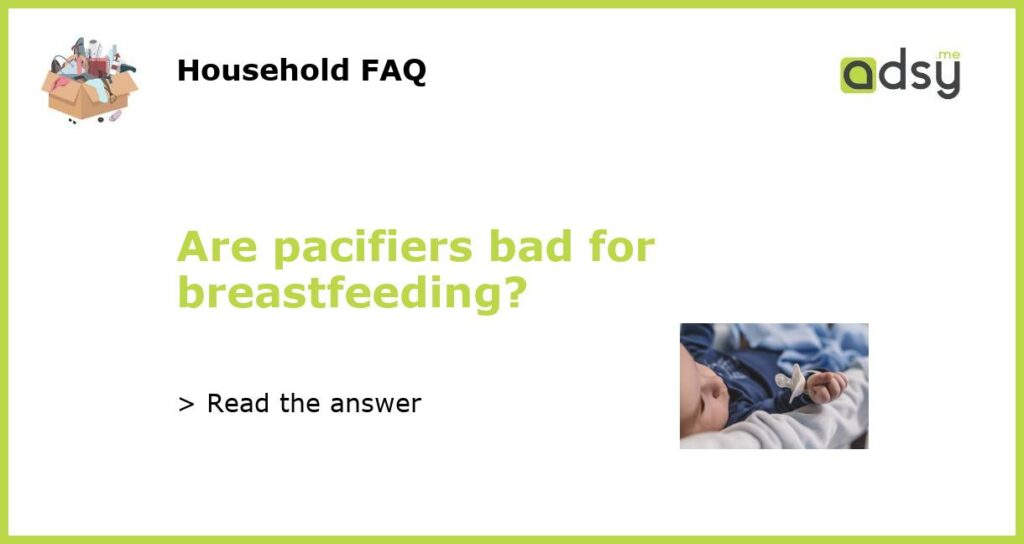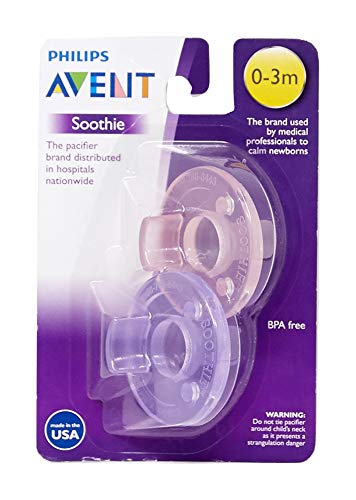The Pros and Cons of Pacifiers
It is common for parents to use pacifiers to soothe their babies, as pacifiers can provide comfort and help calm a fussy baby. However, when it comes to breastfeeding, the question arises: are pacifiers bad for breastfeeding?
Pacifiers and Nipple Confusion
One concern with pacifier use, especially in the early days of breastfeeding, is nipple confusion. Nipple confusion occurs when a baby has difficulty latching onto the breast properly after using a pacifier or a bottle.
Babies who become accustomed to the artificial nipple of a pacifier might struggle to latch onto the mother’s breast, leading to difficulties with breastfeeding. This can potentially disrupt the establishment of a successful breastfeeding relationship between mother and baby.
The Impact on Milk Supply
Another concern related to pacifier use is its potential impact on the mother’s milk supply. An infant’s frequent suckling at the breast stimulates milk production. When a baby uses a pacifier instead of nursing, the stimulation to the breast is reduced, potentially leading to a decrease in milk supply.
However, it’s important to note that this impact on milk supply is not a guaranteed outcome for every mother-baby pair. Some babies can successfully switch between pacifiers and breastfeeding without any negative effects on milk production, while others may experience a decrease in supply.
The Importance of Sucking for Development
On the other hand, sucking is a natural reflex for babies and an important part of their development. Sucking on a pacifier can help satisfy this need, providing comfort and soothing for babies when they are not nursing.
Moreover, the act of sucking on a pacifier can also help strengthen a baby’s mouth muscles, which can be beneficial for their oral development. This can contribute to the later development of speech and language skills.
Finding a Balance
Ultimately, the decision to use pacifiers while breastfeeding is a personal choice for parents. Some mothers find that pacifiers are helpful in calming their babies between feeds, allowing them to rest and recharge. Others may opt to avoid pacifiers to avoid potential issues with latch and milk supply.
If you do choose to use pacifiers, a good approach is to introduce them after breastfeeding is well-established, usually around 3 to 4 weeks. This allows time for the baby to become skilled at breastfeeding before introducing an artificial nipple.
It’s also important to note that every baby is different, and what works for one may not work for another. Some babies have no trouble switching between breastfeeding and pacifiers, while others may struggle. Observing your baby’s feeding cues and carefully monitoring their breastfeeding progress can help you determine whether pacifier use is negatively impacting their breastfeeding journey.
In conclusion, pacifiers can have both pros and cons when it comes to breastfeeding. While they can provide comfort and help calm a fussy baby, pacifier use may potentially lead to nipple confusion and a decrease in milk supply for some mothers. However, sucking is a natural reflex for babies, and pacifiers can contribute to their oral development. Ultimately, finding a balance that works for both you and your baby is key.






